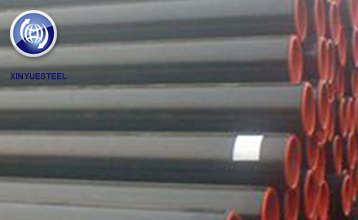The supply and demand side is greatly affected by industrial policies
Aug. 04, 2021
On July 30, Shanghai Liang taigeng said in an interview with reporters: "it is expected that the rebar price will still be able to move in August. The market supply and demand will be greatly affected by industrial policies and other factors. Market participants should focus on the changes of industrial policies and supply and demand."
According to Liang taigeng, in July, some provinces (autonomous regions and municipalities directly under the central government) clearly put forward the goal of "the annual crude steel output will not exceed that of last year". The market has a strong expectation that there will be a phased shortage of supply in the second half of the year, which makes the futures price of rebar rise sharply and drives the spot price to rise, The spot price of rebar in Shanghai and Hangzhou increased by about 400 yuan / ton in July.
Liang taigeng analyzed the rebar market in August from two aspects of supply and demand.

From the perspective of supply, since July, many places have put forward the target of reducing crude steel output, and some steel enterprises have begun to implement the production reduction plan to reduce production through maintenance, equipment transformation and so on. According to Liang taigeng, the crude steel output of Jiangsu Province alone is planned to be reduced by 8.12 million tons in the second half of the year. A steel enterprise in Jiangsu has overhauled a 1280 m3 blast furnace since July 23, and the overhaul time is expected to be 2 months. According to incomplete statistics, at present, six steel enterprises in Shandong Province are carrying out blast furnace maintenance, involving a total blast furnace volume of about 6260 cubic meters, affecting an average daily hot metal output of about 18300 tons. It is expected that the steel reduction in Shandong Province will be more than 10 million tons in the second half of the year. Some industry organizations predict that the crude steel output of the iron and steel industry in the second half of the year will decrease by at least 60 million tons compared with the same period last year, so as to achieve the goal of reducing crude steel output.
In addition, recently, the price difference between hot-rolled coil and deformed steel bar has widened. The benefit of steel enterprises in producing hot-rolled coil is obviously better than that in producing deformed steel bar, which is easy to tilt production resources to plates, thus affecting the supply of deformed steel bar market.
Liang taigeng said: "another factor affecting the rebar market supply in August is the improvement of power supply. In the early stage, due to high temperature and power shortage, steel enterprises in some areas passively reduced production. With the improvement of power supply, the production of electric furnace in steel enterprises will return to normal and the output will increase. "
Internationally, China's steel exports will decrease in the second half of the year, and the return of resources will lead to an increase in the investment of resources in the domestic market. According to the data of the General Administration of customs, in June, China exported 6.458 million tons of steel, a year-on-year increase of 74.5%. In the first half of the year, China exported 37.382 million tons of steel, a year-on-year increase of 30.2%. Liang taigeng predicted that under the background of the national adjustment of steel export tariff policy, steel export volume will decrease in the second half of the year, and this part of resources will be transferred to domestic sales, giving priority to ensuring domestic supply.
In terms of demand, with the end of rainy season and high temperature weather, the demand for rebar in downstream industries will gradually pick up. Liang taigeng said: "in the second half of the year, the demand for rebar in the construction industry and real estate industry is still resilient."
At present, although the scale of real estate under construction decreases slowly, the investment in real estate development still increases. Statistics show that in the first half of the year, real estate development investment increased by 15.0% year-on-year, with an average growth of 8.2% in the two years.
In addition, the transformation of old urban communities has been strengthened. In the first half of the year, 36400 old urban communities were newly renovated, accounting for 67.5% of the annual plan.
In terms of infrastructure construction, the frequent heavy rainfall some time ago caused serious damage to the infrastructure of many cities in the central region. With the start of post disaster reconstruction, the construction of major projects will be strengthened. With the acceleration of the issuance of special bonds in the second half of the year, funds have been put in place one after another. The deployment of relevant major projects will be accelerated in many places across the country. It is expected that the demand for rebar and other construction steel will pick up.
Liang taigeng said: "it needs special attention that August is still a high incidence period of rainstorms and typhoons. The bad weather and the fermentation of epidemic diseases in some areas may affect the construction progress of construction projects, and then affect the demand for rebar."



